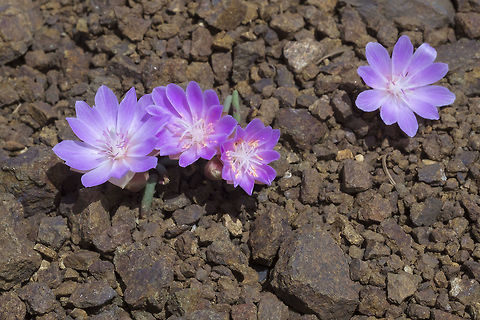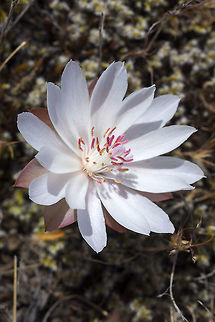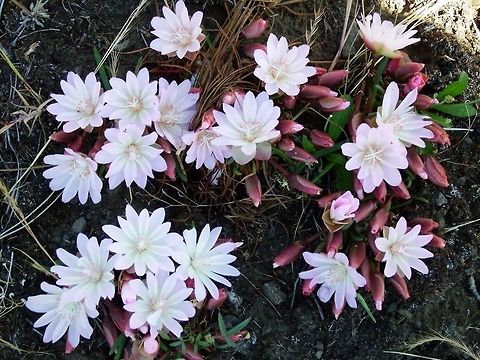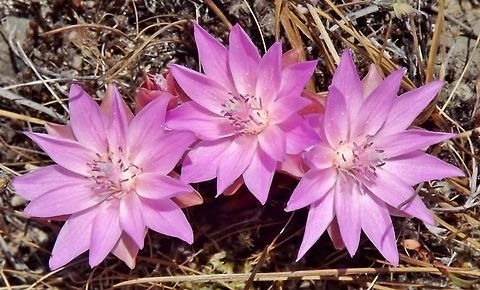
Appearance
The plant is a low-growing perennial plant with a fleshy taproot and a simple or branched base. The flower stems are leafless, 1–3 cm tall, bearing at the tip a whorl of 5–6 linear bracts which are 5–10 mm long. A single flower appears on each stem with 6–9 oval-shaped sepals. They range in color from whitish to deep pink or rose during May and June. The petals are oblong in shape and are 18–35 mm long.At maturity, the bitterroot produces egg-shaped capsules with 6–20 nearly round seeds.

Naming
French trappers knew the plant as racème amer .Native American names included spetlum or spetlem, meaning "bitter", nakamtcu , and mo'ôtáa-heséeo'ôtse
Three major geographic features, the Bitterroot Mountains , the Bitterroot Valley, and the Bitterroot River , owe the origins of their names to this flower.

Habitat
The plant grows on gravelly to heavy, usually dry soil, in scablands or foothills areas. It is found on sagebrush plains to the lower mountains, in western and south central Montana. It ranges in the north from British Columbia to southern California, and on the east side of the Cascade Range to Colorado and Arizona.
Uses
The roots were consumed by tribes such as the Shoshone and the Flathead Indians as an infrequent delicacy. Traditionally, the Ktunaxa cooked bitterroot with grouse. For the Ktunaxa, bitterroot is eaten with sugar; other tribes prefer eating it with salt. The Lemhi Shoshone believed the small red core found in the upper taproot had special powers, notably being able to stop a bear attack.Meriwether Lewis ate bitterroot in 1805 and 1806 during the Lewis and Clark Expedition. The specimens he brought back were identified and given their scientific name, ''Lewisia rediviva'', by a German-American botanist, Frederick Pursh.
The bitterroot was selected as the Montana state flower on February 27, 1895.
References:
Some text fragments are auto parsed from Wikipedia.